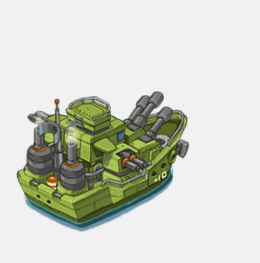


The inter-war period saw the battleship subjected to strict international limitations to prevent a costly arms race breaking out. The capital ships of the Royal Navy and the German Imperial Navy did come into contact on occasions, notably in the Battle of Jutland, but there was no decisive naval battle where one fleet came out the victor. The majority of the Royal Navy's strength was deployed at home in the Grand Fleet, with the primary aim of drawing the German High Seas Fleet into an engagement. The Royal Navy at the start of the First World War was the largest navy in the world due, in the most part, to The Naval Defence Act 1889 formalising the adoption of the " two-power standard" which called for the navy to maintain a number of battleships at least equal to the combined strength of the next two largest navies. Germany, France, the Russian Empire, Japan, Italy, Austria-Hungary, and the United States all began dreadnought programmes second-rank powers including the Ottoman Empire, Argentina, Brazil, and Chile commissioned dreadnoughts to be built in British and American shipyards. Possession of modern battleships was not only vital to naval power, but also represented a nation's standing in the world.

The launch of Dreadnought in 1906 prompted an arms race with major strategic consequences, as countries built their own dreadnoughts. In 1907, before the revolution in design brought about by HMS Dreadnought of 1906, the United Kingdom had 62 battleships in commission or building, a lead of 26 over France and 50 over the German Empire. This is a list of dreadnought battleships of the Royal Navy of the United Kingdom. How China Could Sink a U.S.HMS Benbow leads a line of three battleships. Russia Has Missing Nuclear Weapons Sitting on the Ocean Floor This first appeared in 2020 and is being reposted due to reader interest. He is the author of several books on military headgear including A Gallery of Military Headdress, which is available on. Peter Suciu is a Michigan-based writer who has contributed to more than four dozen magazines, newspapers and website. Yet, the "all-big-gun" ships remained the Queen of the Seas through World War II, by which time the battleship was overshadowed by the aircraft carrier and Great Britain had lost its place as the world's dominant naval power. While Germany never really closed the gap and had just seventeen Dreadnought battleships and battlecruisers to the Royal Navy's twenty-nine, the two navies only met in one major, yet far from decisive engagement at the Battle of Jutland on May 31, 1916.Īfter the war naval treaties limited the number of battleships navies could possess. It changed the balance of power in Europe as the Anglo-German naval race heightened tensions between the two great powers. While the Royal Navy had a head start, navies around the world built more powerful warships and soon even Dreadnought was eclipsed by so-called " Super-Dreadnoughts." By 1910, even Brazil had more powerful ships in its navy than HMS Dreadnought.īy the time war came in 1914, Great Britain "won" the naval arms race, but at a terrible cost. Instead of providing a technological advantage, it essentially leveled the playing field. The arrival of this new ship inspired a naval arms race-and while at her commissioning the Royal Navy possessed a lead of twenty-five first-class battleships over the fleets of foreign navy, with HMS Dreadnought the Royal Navy possessed just a lead of only one ship in the newest class. The ship was so revolutionary that its name came to describe an entire class of battleships of the era-with the major all-big-gun warships built before her now described as " Pre-Dreadnought." The British may have had the most powerful warship in the world, but only briefly. In addition to being well-armed, HMS Dreadnought featured redistributed armor to protect its guns, engines and magazines, while an innovative bulkhead structure in the interior made flood control easier, which increased her survivability. This new warship combined the "all-big-gun" armament, which included ten 12-inch guns, but was also quite speedy thanks to the new steam turbine engines.


 0 kommentar(er)
0 kommentar(er)
